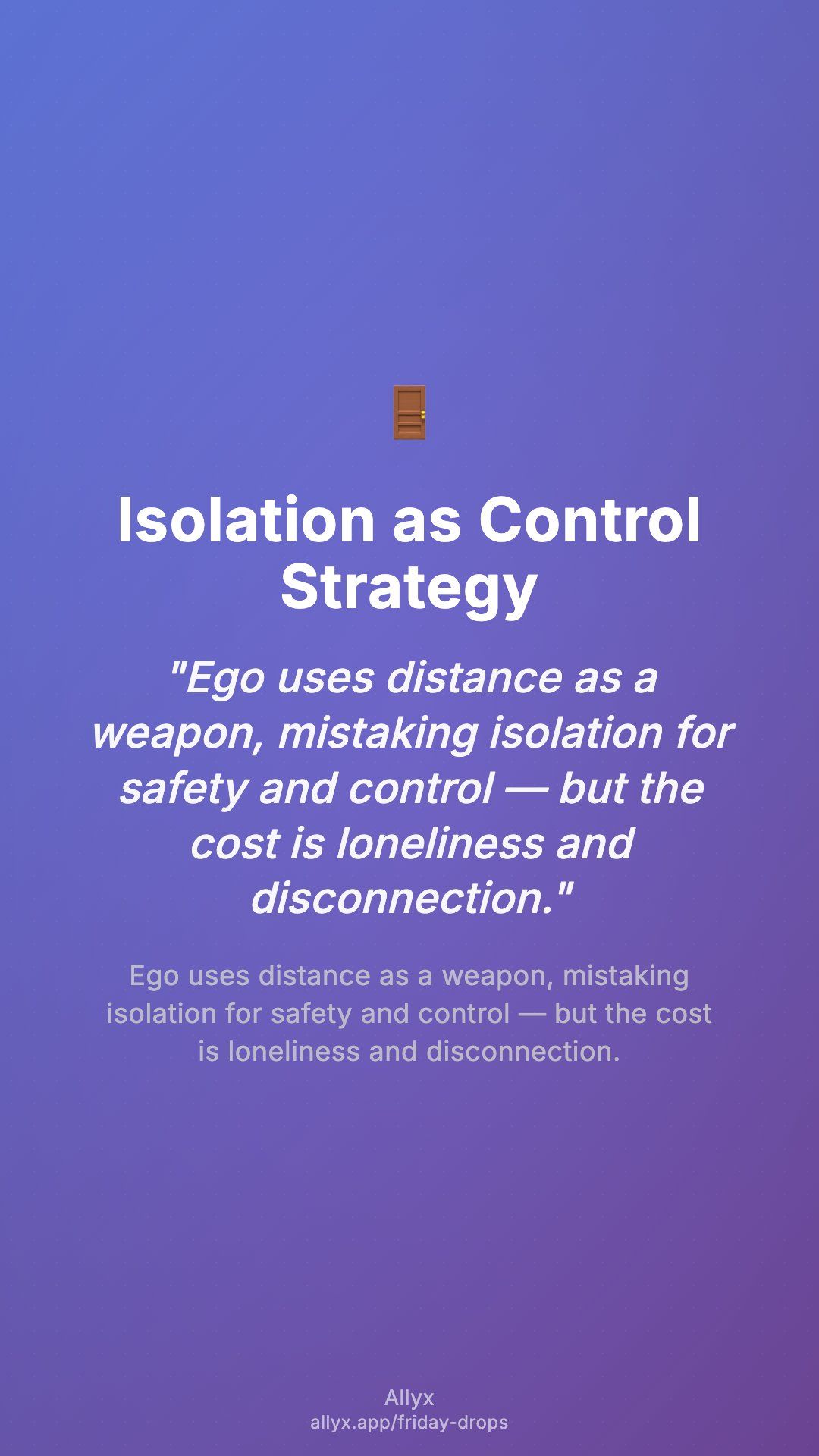Isolation as Control Strategy
Ego uses distance as a weapon, mistaking isolation for safety and control — but the cost is loneliness and disconnection.
Thursday, September 11, 2025
Metaphorical Narrative
Picture a fortress with walls so high no one can see inside. At first, it feels safe — no intruders, no surprises. But seasons change, and the walls block sunlight too. The fortress becomes a prison. Ego builds isolation to control vulnerability, only to trap itself in its own defense.
Core Insight
Isolation is ego’s attempt to stay safe by limiting exposure. Vulnerability feels like weakness, so distance becomes strategy: fewer people to disappoint, fewer risks to face. But the cost is high. The nervous system, wired for connection, interprets isolation as threat, leading to loneliness, heightened stress, and even physical decline.
Real-life signs: declining invitations, defaulting to “I’m fine,” keeping conversations shallow, or ghosting relationships once demands arise. Ego insists this is freedom, but the silence reveals it as avoidance.
Spotting cue: if being alone feels like the only way to stay in control, isolation may have shifted from choice to ego’s prison.
Identity Shift Tie-In
Observer Mode reframes isolation as signal, not safety. Sovereignty means choosing connection with discernment — not rejecting it wholesale. When you see isolation as a control reflex, you can lower the drawbridge and invite support without surrendering your freedom.
Saturday Experiment
- Reach out to one person you trust with a simple check-in.
- Notice the ego’s resistance (“They don’t care,” “I’ll bother them”).
- Write down what actually happens — reality vs ego’s forecast.
Sunday Reflection
Journal in third person: “They saw how isolation was not safety but control. The walls kept pain out, but also kept joy away. They began to test what it means to open a door, even a crack.”

